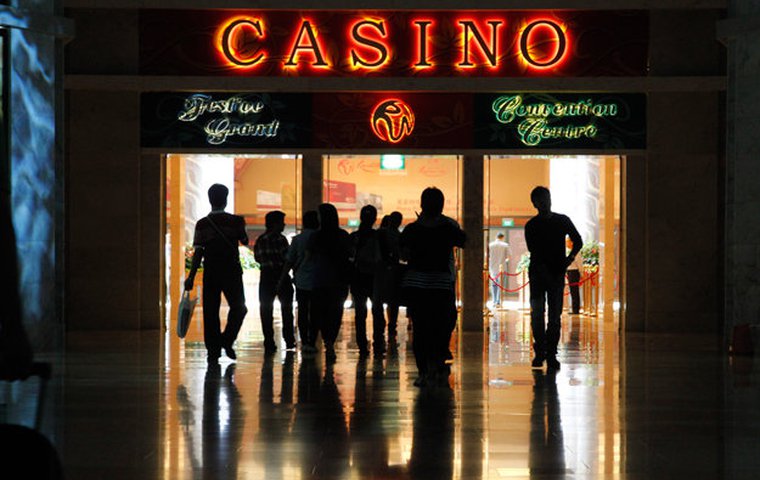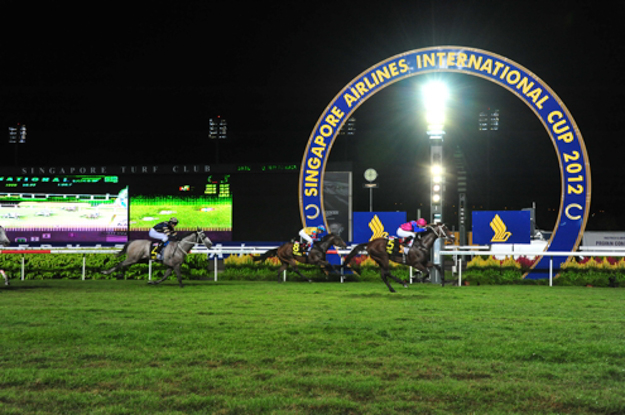
Paul Haigh talks with the Singapore Turf Club’s Senior Vice President (Racing) Soong Tze Ming about how the legalization of casino gambling has challenged racing – previously the country’s only legal betting outlet – and how racing has learned to adapt.
The subject of legalising casino betting in Singapore threw the island republic into a state of moral turmoil. Was the move justified on utilitarian grounds? Singaporeans, no less than other South East Asians, have an apparently innate desire to bet. Better that they should do it legally and in public than surreptitiously and in defiance of the law.
Or might the move cause damage to Singapore’s strictly regulated society and reputation for being one of the least corrupt nations in the world?
Nowhere was there more trepidation when the legislation finally went through in 2010 than in the Singapore Turf Club (STC), the country’s only legal betting outlet until then. But at the STC, the concern was caused more by the economic implications than by any philosophical angst.
“We knew the impact would be there,” said STC Senior Vice-President (Racing) Soong Tze Ming, “But the effect has been much greater than we thought. Both casinos [one in the Marina Bay area, the other on the holiday island of Sentosa] have recorded big and increasing profits since they opened. Our turnover was down by 30 percent in the same period.”
Whether it was the novelty of casino gambling or the perceived glamour – inexplicable to those of us who derive almost as much pleasure from solving the puzzle of a horse race as we do from going to collect –it seemed that Singaporeans had a huge appetite for it. And racing, the more traditional betting outlet, became the main sufferer, just as it has in so many other parts of the world.
This had nothing to do with any government hostility toward racing. After all, the STC is a government agency, and in order to protect Singapore’s 3.1 million citizens from the temptations of cards, slots, roulette, and similar, the government required and still requires ID presentation by all Singaporeans and a tax payment at the door of SGD$100 (USD$80) that permits entry for 24 hours only.
Part of the reasoning behind the legalisation was that it would make Singapore a more attractive holiday destination, particularly for the wealthy of mainland China, and it has certainly achieved this aim. But the locals were hot for it too - and they came in spite of the tax.
“We noticed the decline particularly among what you might call our high value customers,” Soong said. “They were the ones we lost. The smaller punters still preferred to come to the races. But having said that, we have now achieved stabilisation of the decline. We believe we will see a pick up soon, and we do see certain signs that a pick up may be coming.”
However, that pick up is hampered by Singaporean law that prevents the STC from advertising the relative merits of a visit to Kranji Racecourse over the dubious pleasures of the casinos. The Club isn’t even allowed to put an ad in the paper inviting people to come to the races, on the grounds that it would effectively be encouraging people to bet. Of course the same rather puritanical restrictions apply to the casinos, but they can get round them by advertising adjoining attractions such as Universal Studios at Sentosa. Everyone is almost automatically reminded when they see the ads for Universal, or just for Sentosa itself, that there’s a casino there too.
The STC’s own methods of getting round the advertising ban include the election of the Turf Belles, a group of undeniably glamorous young women chosen partly by public ballot through social media. They attract considerable attention both before and after the election, and plenty of traffic on Facebook and Twitter, but popular though they may be - like the Tiger Beer girls who encourage racegoers to enjoy Singapore’s world famous brand of beer - they can hardly be expected to compete with newspaper and TV advertising, even if that advertising is indirect.

The STC has faced an inevitable dwindling of custom as a result. But is there any traffic the other way? Do some of the tourists who visit Singapore from countries where casinos are still banned visit the racecourse occasionally for a change if nothing else? Or is it “them” against “us” as far as the casinos and the STC are concerned?
“Well, we don’t step into their territory and they are not allowed to advertise on ours,” Soong explained. “What we can do, however, is publicise an event, which is why the Singapore International Racing Festival [held each year in May] is so important to us. During the week of the International Races a lot of new customers do come to the racecourse. There was a thought during the period of decline that perhaps the international races should be shelved because they’re expensive to stage. But one of the main reasons why that was rejected was because by doing so we would be depriving ourselves of our best method of making the racing brand visible to the general public.”

Another method the Club has used to fight back against the casinos is to improve the quality of that brand.
“I don’t think it’s unfair to say that in the late 1990s racing in Singapore did have a rather…. dodgy image,” said Soong. “Here’s an example of how it was perceived: If you went to a bank to ask for a loan, the bank would reduce your credit limit if you had an STC account. We’ve set out to change that image. Quality and integrity have been our main concerns since then. We’ve hammered them, and now the image is very different from what it was 15 years ago. Racing is no longer a taboo.
“The drop in turnover since 2011 was not entirely the result of the casinos arrival,” he continued. “The economy was a bit flat at the time they opened, and even those of our customers who said they’d never go to casinos were saying they were spending less, on betting as well as everything else. So, we had to fight an economic recession as well as the arrival of new competition.
“One thing we never did though was cut prize money. Quite the opposite in fact. We increased prize money, even when our racehorse population dropped from around 1,400 to around 1,200, and that, as well as the changed perception of racing and the improvement in the economy, is one of the reasons why it’s risen again to around 1,380 now. We’re still very pleased to see new owners from overseas though. And they are coming. We’re delighted that Hong Kong Jockey Club past Chairman Ronald Arculli has owned horses here, and so has present HKJC Chairman T. Brian Stevenson.”
Much of the casinos’ profit comes from the influx of highrollers from outside Singapore, particularly from mainland China. Has any attempt been made to woo them to Kranji?
“Not so far,” said Soong, pointing once again to the restrictions on advertising that prevents the Club from encouraging such cross-fertilisation. “But we have had enquiries from overseas tour operators. The great thing is that, for the time being anyway, the leakage to casinos seems to have been stopped. Or at least to have stabilised.”
The figures still make grim reading though. In the fiscal year ending March 2011 turnover on Kranji’s two meetings a week was SGD$2.2 billion (USD$1.8 billion). In the year ended March 31, 2014, it was still down at SGD$1.65 billion (USD$1.3 billion) – a drop since the casinos’ arrival of around 25 percent. How worried had the executive of the STC been when the drop began? And how worried are they now?
“It was worrying,” Soong said. “There’s no denying that. But the important thing is that the fall has stopped. We’ve been used to challenges in the past from the cruise ships [which used to operate from Singapore on night voyages that provided all casino facilities] and from the trips to Genting Highlands [a gambling-permitted enclave across the border in southern Malaysia] and we’ve come through them. The one thing we do still have to worry about is the loss of the younger crowd.”
That is a plaintive cry heard from racing clubs around the world, particularly those that find themselves in direct competition with casinos. How to persuade those with (allegedly) shorter attention spans, and a fondness for glitz, of the aesthetic as well as the cerebral advantages of racing over the whirring wheels and the quick hits, is a problem that confronts the sport worldwide.
But there is anything besides an air of despondency in Singapore racing at the moment. A betting crowd of 28,000 - about the same as last year - attended the international races in May. Inevitably there is a consciousness that Singapore is a “little brother” to Hong Kong, the racing giant across the South China Sea, and that was reflected once again in this year’s internationals with Hong Kong horses repeating last year’s triumphs with comfortable victories in both the international G1s, the SGD$3 million SIA Cup and the SGD$1 million KrisFlyer Sprint.
But there is definitely an air of having weathered a storm at the STC. As Soong points out, “That’s what they found in Melbourne and Sydney, that when the novelty of casinos begins to wear off, their appeal flattens out and people start coming back to the racecourse.”


